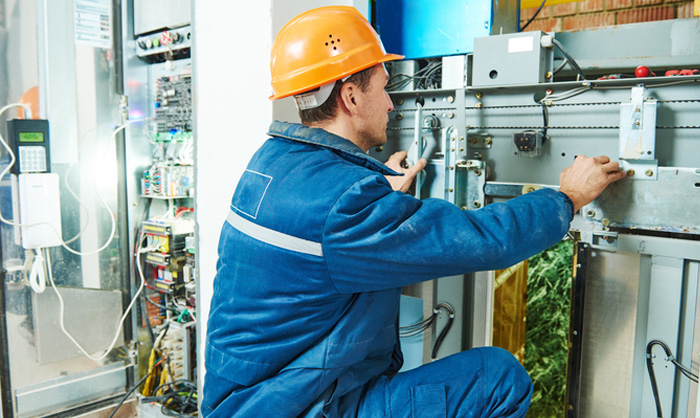Just as many states require you to have your car inspected every year, you have to do the same for your elevator. That’s because there are certain standards in place that all elevators must adhere to for safety reasons. If your elevator fails, you don’t get an approved inspection sticker – or in this case a piece of paper to display in the cab.

Such inspection standards are typically governed by each state yet overseen by federal agencies like OSHA, which says elevators must be inspected at certain intervals, usually not exceeding one year, with additional inspections as needed on a monthly basis.
There are several standards that each building and elevator must comply with, from obvious ones like fire safety codes to more obscure ones that vary by state or by the type of building you have. Whether you own or manage a commercial building, office building, government agency, hospital or university, your elevator must pass stringent safety requirements annually in order to keep operating.
Inspectors will bring safety checklists with them when performing the inspection, which will focus on key areas like:
- Pipes, ducts and wiring
- Ventilation systems
- Hoistway enclosure
- Car top clearance
- Car platform guard
- Traveling cables/junction boxes
- Stop switches
- Door locking devices
- Emergency exit
- Low oil protection
- Bottom clearance
- Terminal stopping devices
Inspections: Timeline and Certification
Most states only need an inspection once a year, but some want them done twice a year. There could also be follow-up audits and inspections if inspectors have come across problems or issues in years past.
Only certified elevator inspectors can perform elevator inspections. These third-party professionals will have a few main goals in mind, and those are to:
- Ensure the safety of passengers ranging from tenants, students and patients to the general public, employees, and clients.
- Offer impartial inspections.
- Minimize liability.
- Meet all requirements mandated by insurance companies.
- Comply with local, state and federal jurisdictions.
You should take your time in hiring the most qualified third-party code inspector possible so you can protect the safety of all passengers who ride your elevator. On top of the actual inspection, inspectors may also handle processing and filing fees on your behalf.
The records of the inspection results must be posted inside the elevator, featuring the signature of the inspector who did the work. The date must also be prominently displayed as well as when the inspection expires.
What You Need to Pass
You will have to meet certain safety requirements in order for your elevator to pass inspection:
- Landing openings must feature operable gates and doors when the cab is on other floors so no one can fall down the shaft.
- Emergency buttons must be operable.
- Lights and buttons must be operable.
- Max load limits have to be posted.
- There must be clear access to machine space.
Have questions about elevator inspections for any building you may own or manage? Give us a call today for clarification.
